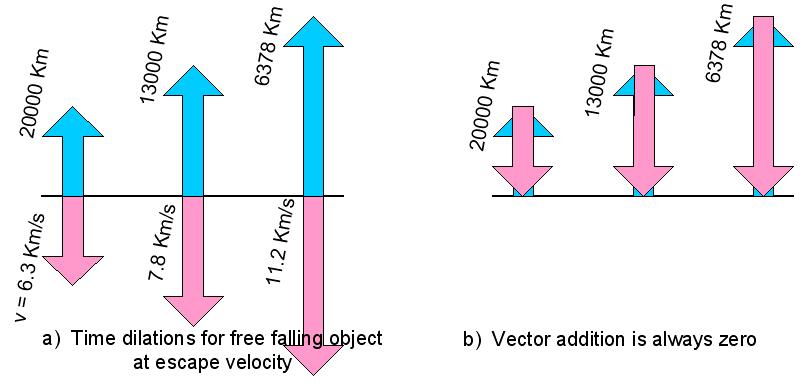2.6 Free falling clocks do not slow down
Lets say that the
rocket on Figure 7 turn around 180º and accelerates downwards, and
that when it reaches 20,000 Km from Earth’s CG at a speed of 6.3 Km/s
(escape velocity) it runs out of fuel and it begins to free fall to
Earth. As it begins to pick up speed and gets closer to Earth,
the gravitational field also increases. See Figure 8 for an
illustration of the event, where gravitational time dilations are
represented by an upward EVV and the speed by a downward vector.
These two vectors, as described earlier, grow at the same rate.
The sum of these two vectors is always zero. Time dilation is
zero. This means that clocks in free fall at the escape velocity
do not slow down. Is this a point where the model breaks down or
where it really shines? This effect makes part of the equivalence
principle a true identity, it says that objects in inertial state are
identical to objects in free fall. It is important to note, that
at speeds other than the escape velocity (higher or lower), the
difference between the vectors gets smaller as the object falls.
Time dilation effects get smaller for both cases. Earlier it was
discussed in section 2.3 that launching a clock towards a BH at the
escape velocity would make time stop twice at the event horizon.
It turns out that not only it never stops, it doesn’t even slow down.

Figure 8.
